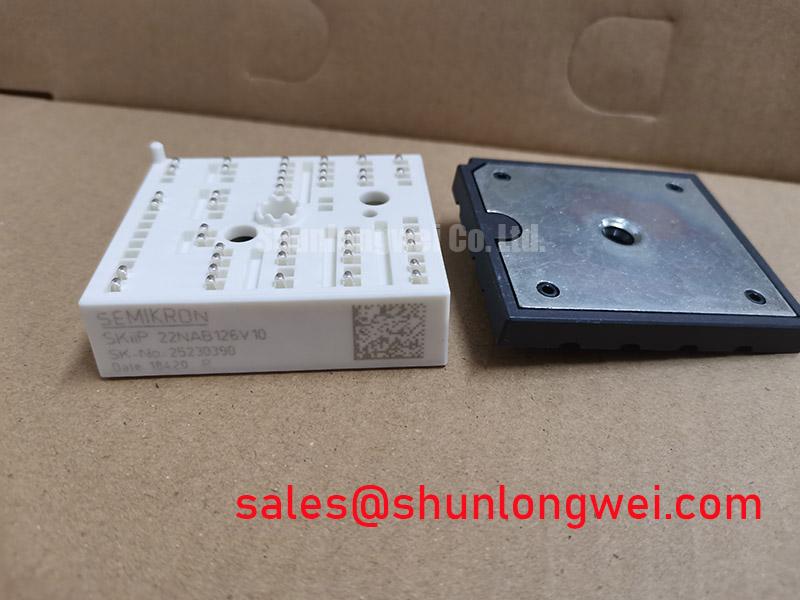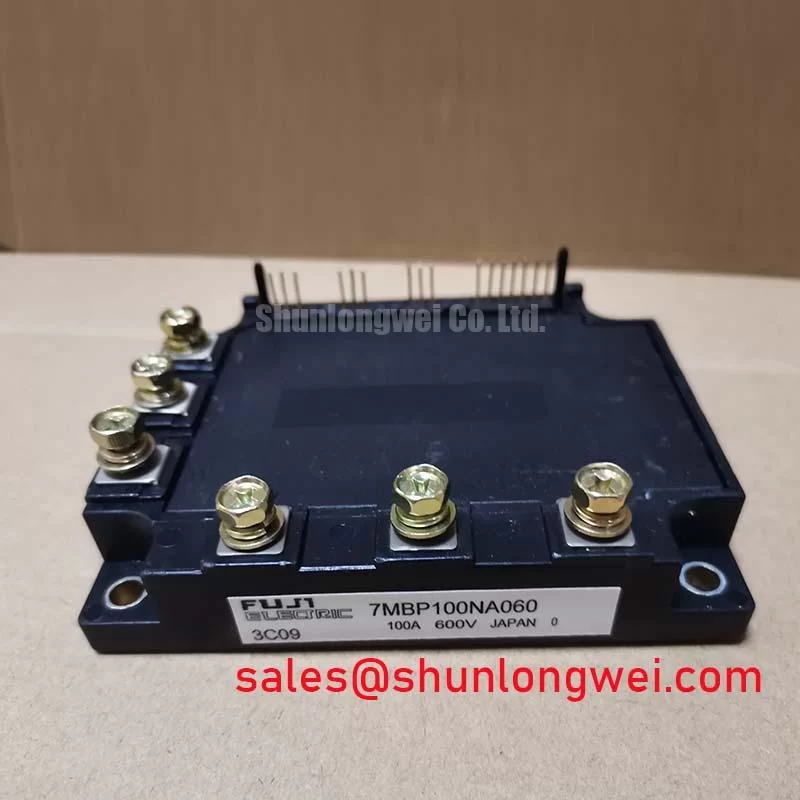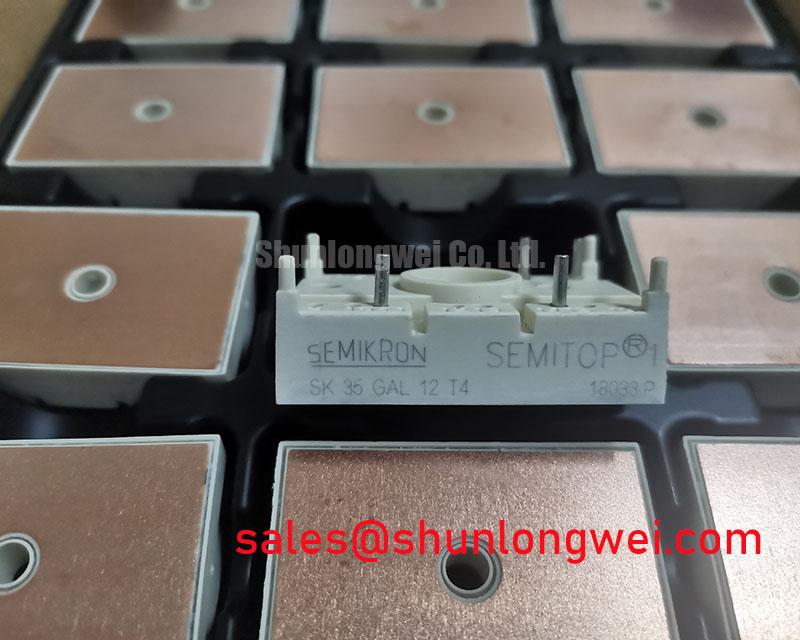MG400V1US51A IGBT Module: In-Depth Analysis for High-Efficiency Power Systems
The MG400V1US51A is a high-current IGBT module engineered for superior efficiency, featuring a low collector-emitter saturation voltage to minimize conduction losses in demanding power conversion systems. With core specifications of 1200V | 400A | VCE(sat) 2.7V (max), this module delivers two critical engineering benefits: reduced thermal load and higher overall system efficiency. For engineers designing high-power motor drives or inverters, the module's low saturation voltage directly translates into less heat dissipation, enabling more compact thermal management solutions. Best suited for high-power industrial applications up to 1200V where minimizing conduction losses is a primary design driver.
Key Parameter Overview
Content last revised on October 6, 2025.
Decoding the Specs for Enhanced Switching Performance
The technical specifications of the MG400V1US51A are tailored for robust performance in high-power switching circuits. The parameters below highlight its capacity for handling significant electrical loads while maintaining operational efficiency. Particular attention should be paid to the VCE(sat) and thermal resistance values, which are pivotal for thermal design and system reliability.
| Parameter | Symbol | Test Condition | Value | Unit |
|---|---|---|---|---|
| Absolute Maximum Ratings (Ta=25°C) | ||||
| Collector-Emitter Voltage | VCES | VGE = 0V | 1200 | V |
| Gate-Emitter Voltage | VGES | VCE = 0V | ±20 | V |
| Collector Current (DC) | IC | Tc = 25°C | 400 | A |
| Collector Current (1ms Pulse) | ICP | Tc = 25°C | 800 | A |
| Collector Power Dissipation | PC | Tc = 25°C | 2600 | W |
| Electrical Characteristics (Ta=25°C) | ||||
| Collector-Emitter Saturation Voltage | VCE(sat) | IC = 400A, VGE = 15V | 2.1 (Typ), 2.7 (Max) | V |
| Gate-Emitter Leakage Current | IGES | VGE = ±20V, VCE = 0V | 0.5 | μA |
| Collector Cut-off Current | ICES | VCE = 1200V, VGE = 0V | 1.0 | mA |
| Thermal Characteristics | ||||
| Thermal Resistance (Junction to Case) | Rth(j-c) | IGBT | 0.048 | °C/W |
| Thermal Resistance (Junction to Case) | Rth(j-c) | Diode | 0.083 | °C/W |
Download the MG400V1US51A datasheet for detailed specifications and performance curves.
Application Scenarios & Value
Achieving System-Level Benefits in High-Current Industrial Systems
The MG400V1US51A is engineered for high-power applications where efficiency and reliability are paramount. Its robust 400A current rating and low conduction losses make it an excellent choice for the core of industrial power conversion systems.
- Variable Frequency Drive (VFD): In large motor drives, a key engineering challenge is managing the heat generated by the power stage within a confined space. The low VCE(sat) of the MG400V1US51A directly addresses this by minimizing conduction power loss (P = VCE(sat) × IC). This reduction in waste heat allows for smaller heatsinks, increasing power density and improving the VFD's long-term operational stability.
- Uninterruptible Power Supply (UPS): For high-capacity UPS systems, efficiency is critical to reduce operating costs and extend battery runtime. The module's low loss characteristics contribute to a higher efficiency inverter stage, ensuring that more stored energy reaches the critical load.
- Welding Power Supply: The module's ability to handle high current pulses (up to 800A) makes it suitable for demanding welding applications, providing precise and stable power control for consistent weld quality.
What is the primary benefit of its low VCE(sat)? Minimized conduction losses for higher system efficiency. While this module provides a strong balance of performance, for systems requiring enhanced voltage overhead, the CM400HA-24H offers a 1200V rating in a different package configuration. A comprehensive understanding of IGBT module selection is crucial for optimizing system design.
Frequently Asked Questions (FAQ)
How does the VCE(sat) of 2.7V (max) on the MG400V1US51A impact system design?
A low VCE(sat) directly reduces the power lost as heat during the IGBT's on-state. For a designer, this means lower junction temperatures, improved device reliability, and reduced requirements for the cooling system (e.g., smaller heatsink, lower fan speed), which can save space, cost, and audible noise in the final product.
What is the advantage of the module's isolated mounting base?
The integrated isolation layer between the semiconductor chips and the metal baseplate simplifies the assembly process. It allows the module to be directly mounted to a grounded heatsink without needing a separate, thermally-resistive insulating pad. This not only improves thermal transfer but also enhances electrical safety and reduces component count. Why is the isolated base important? It simplifies heatsink mounting and improves electrical safety.
Is the MG400V1US51A suitable for parallel operation to achieve higher current?
While datasheets for this specific module may not provide detailed paralleling guidelines, high-power IGBT modules are often designed with characteristics that facilitate current sharing. For successful IGBT paralleling, it is critical to ensure a symmetrical layout for gate drive paths and power connections to balance stray inductances. Additionally, matching devices with similar VCE(sat) and VGE(th) characteristics is essential for even current distribution and thermal balance.
What are the primary considerations for the gate drive circuit for this 400A IGBT module?
A gate driver for the MG400V1US51A must be capable of sourcing and sinking sufficient peak current to charge and discharge the large gate capacitance quickly, minimizing switching losses. A clean, low-impedance connection using a Kelvin Emitter pin is crucial to mitigate the effects of internal inductance. Using a bipolar gate voltage (e.g., +15V/-5V) is also recommended to ensure a strong turn-off and improve noise immunity, preventing spurious turn-on events.
Technical Deep Dive
Balancing Conduction and Switching Losses for Optimal Efficiency
The core challenge in power semiconductor design is managing the trade-off between conduction losses and switching losses. The MG400V1US51A is a product of design choices aimed at optimizing this balance for high-power, medium-frequency applications. The low VCE(sat) is a key strength, but its engineering implications must be understood in context.
Think of VCE(sat) as the 'toll' the current pays to pass through the switch when it's fully on. The lower this toll, the less energy is wasted as heat during operation. The MG400V1US51A's low VCE(sat) value is like an express lane with a very low toll, ensuring most of the power is delivered to the load, not wasted in the switch. This is paramount in applications like motor drives, where the IGBT spends a significant amount of time in the 'on' state.
Conversely, switching loss is the energy consumed during the transition between the on and off states. This can be compared to the energy spent opening and closing a very heavy gate. The faster you can operate the gate, the less energy is wasted in that inefficient, partially-open state. While a very low VCE(sat) can sometimes be associated with slower switching speeds, this module provides specified switching times that make it effective for PWM frequencies typically used in industrial inverters and power supplies.
From an Engineer's Perspective
When evaluating a component like the MG400V1US51A, the datasheet provides the foundational numbers, but the real assessment comes from placing it within the context of a complete system design. This module's primary value lies in its low conduction losses, which directly eases the burden on the thermal management system. In a power-dense design, this thermal headroom is not a minor convenience; it is a critical enabler of reliability and can be the deciding factor in meeting project constraints for size and cost. It represents a solid, reliable choice for designers looking to build efficient and robust high-power conversion systems without venturing into more complex or costly technologies.



















